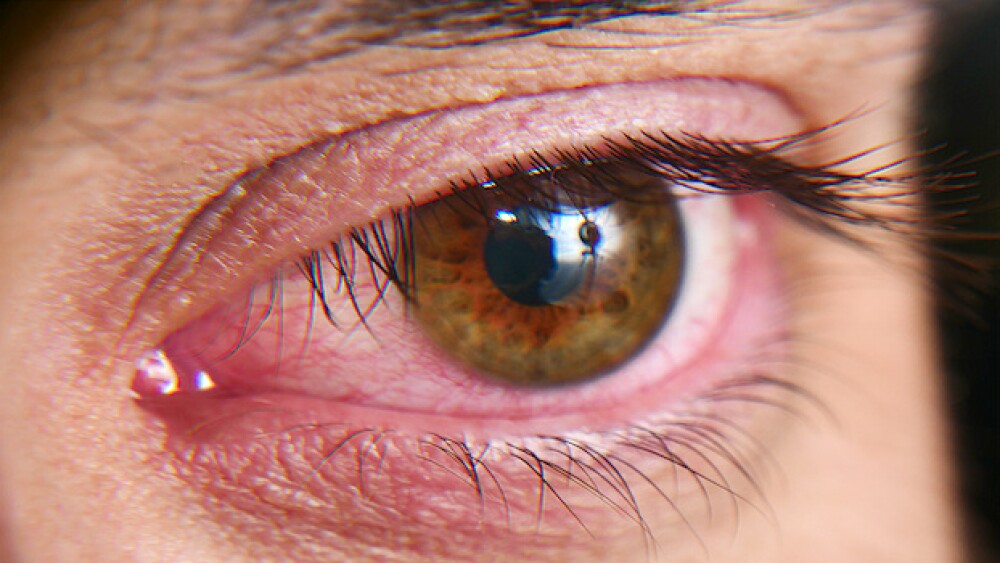The regulator’s approval makes Miebo the first DED treatment that directly addresses tear evaporation. The drug is expected to hit U.S. markets in the second half of 2023.
Pictured: A dry eye/Adobe Stock, Kryuchka Yaroslav
Thursday, the FDA approved Bausch + Lomb and Novaliq’s perfluorohexyloctane ophthalmic solution, now to be marketed as Miebo, to treat symptoms of dry eye disease.
Miebo is administered as a single drop into each eye and is given four times a day. Its active ingredient, perfluorohexyloctane, is a semifluorinated alkane that forms a layer over the tear film, which in turn helps limit evaporation at the ocular surface. The drug’s label bears no boxed warning but cautions patients against the risk of blurred vision.
Miebo is the “first and only” FDA-approved drug that directly targets tear evaporation in dry eye disease (DED), Brent Saunders, chairman and CEO of Bausch + Lomb, said in a statement, adding that the company expects the drug to hit U.S. markets in the second half of 2023.
Data from GOBI and MOJAVE, both pivotal Phase III, randomized, double-masked and saline-controlled studies, backed Miebo’s FDA bid. With more than 1,200 patients enrolled between them, the two studies found that Miebo significantly improved eye dryness, as measured by a Visual Analog Scale, and integrity of the ocular surface, as assessed by total corneal fluorescein staining.
The trials also showed that symptom relief started as early as day 15 and was durable through the entire 57-day duration.
Miebo, previously known as NOV03, was first discovered by Novaliq and was exclusively licensed by Bausch + Lomb in December 2019 for an undisclosed amount. As per the agreement, Novaliq will be eligible for milestones and royalties based on annual Miebo net sales.
Dry Eye Disease Competitors
Joining Bausch + Lomb and Novaliq in the DED space is Aldeyra, which is developing its investigational RASP modulator reproxalap, which has first-in-class potential.
In February 2023, the FDA accepted Aldeyra’s New Drug Application, which the company supported with data from more than 2,000 patients across five clinical trials, demonstrating the candidate’s benefit in terms of ocular dryness symptom score, ocular redness and Schirmer test for tear production. Reproxalap’s clinical development program also found no significant safety concerns.
The regulator is expected to arrive at a decision in November 2023.
New Jersey’s Palatin Technologies is also developing a DED treatment, PL9643, and last month presented early Phase III data at the Association of Research in Vision and Ophthalmology (ARVO) Annual Conference.
The study, dubbed MELODY-1, showed the candidate improved symptomatic ocular pain and demonstrated significant efficacy across other measures. These benefits were reported across multiple regions of the eye, which could be PL9643’s distinguishing efficacy characteristic from other DED treatments.
Tristan Manalac is an independent science writer based in metro Manila, Philippines. He can be reached at tristan@tristanmanalac.com or tristan.manalac@biospace.com.






